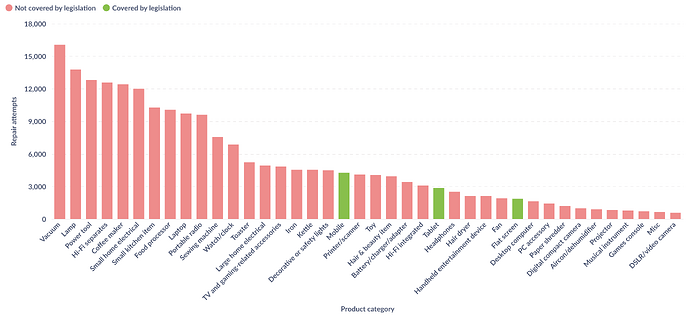Originally published at: https://therestartproject.org/data-and-insights/research/repair-day-2024/
This October marks 15 years since the world’s first repair café was held by Dutch journalist Martine Postma.
In holding the first community run repair event, she sparked a global movement in which communities are (literally) taking matters into their own hands to reject our throwaway economy.
Now we’re telling the story of the rise of community repair. After logging data from more than 200,000 repair attempts across 31 countries over 12 years, we’re releasing a report exploring the rise of the community repair movement, and what that data tells us (more detail below).
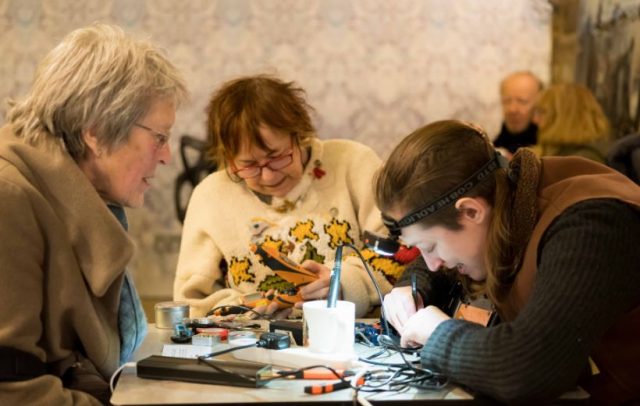
Photo: Mark A Phillips
Alongside this, we’re telling the story of a wasted opportunity. We found that most people think electricals that are brought to waste facilities in good condition should be kept in use through repair or reuse. But only a fifth of the UK’s waste facilities offer any reuse of small electrical and electronic devices (more detail below).
This highlights the need for government reuse targets to ensure more products are kept in use – targets that are supported by 85% of people.
It also shows the importance of community repair, which is filling a gap and providing an opportunity for people to give their things a second life.
This October we’re celebrating the brilliant repair cafés that are helping people across the world to give their things a second life. We’re seeing repair-themed cakes, we’re watching politicians become repair enthusiasts, and we’re seeing communities take part in the joy of repair. Over 100 fixing events will happen across the UK, from Glasgow to Cardiff; Belfast to Bristol.
Around the world, over 1800 events are planned in over 35 countries from India to Ukraine, the Philippines to Mexico. Activities include 15th birthday celebrations for Repair Cafe International, an open air repair café in the Grand-Place in Brussels, a webinar with an EU commissioner by Right to Repair Europe, repair training courses for refugees in Uganda, and a talk by the Australian Repair Network in Brisbane.
Repair day is Saturday 19th October: Join us in celebrating repair this weekend – and the rest of October. Find resources here.
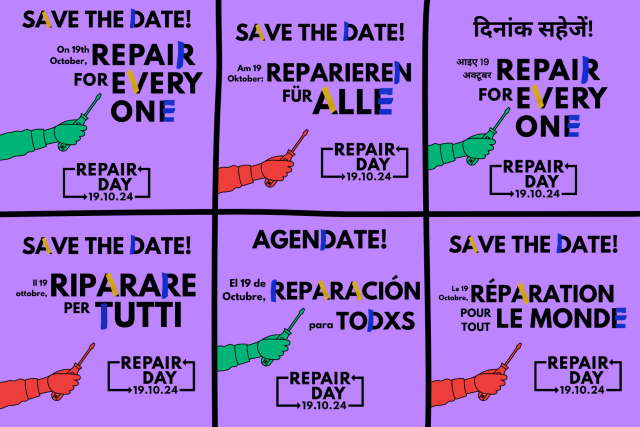
What do the reports tell us?
The first Open Repair Alliance report shows rapid growth and huge public enthusiasm for repairs.
In the most recent set of Open Repair Alliance data, there are: 208,491 repair attempts of electrical and electronic items from 19,986 events run by 1,158 community repair groups across 31 countries around the world.
And in the last 12 months from August 2023 to July 2024, the Open Repair Alliance logged nearly 70,000 repair attempts of electronic and electrical items.
That means each month, nearly 6,000 have been logged – nearly 200 repair attempts every day!
Using this data, we can estimate the scale of electrical repair attempts in community repair events across the world. Assuming there are at least 4,000 repair groups1 around the world, this dataset captures only around 20% of the total electrical repairs performed at community events.
This means there are likely to be approximately 30,000 repair attempts each month, or around 1,000 per day. And a whopping 190,000 successful repairs every year.2
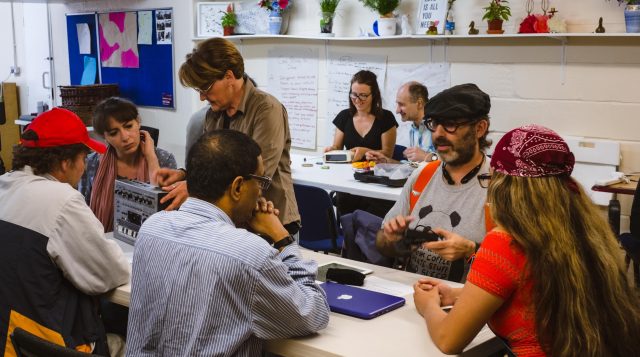
Photo: Mark A Phillips
Highlighting the huge gap in right to repair legislation
What this data tells us is just how far we have to go before Right to Repair legislation helps us to keep the vast majority of products in use.
Our data shows the main barriers community fixers come up against when repairing products: spare parts not being available is the top barrier (25% of cases) followed by them being too expensive (18%), then not being repairable design (16%).
Only 40 products out of the over 208,000 logged so far, or 0.0002% are covered by existing EU legislation. This is because the most established regulations are for white goods and TVs. People don’t tend to bring dishwashers and fridges into repair cafes! And only a tiny minority of the TVs brought in are recent enough to be covered (introduced to the market from March 2021).
Expanded rules will provide Right to Repair for smartphones and tablets from June 2025, so we have yet to benefit from those. And many products seen at events are well beyond 10 years old. But these are products that simply aren’t supported by existing right to repair legislation.
Beyond Recycling of Electricals: What’s happening in the UK’s waste facilities?
Last year we discovered that nearly half of the electronic and electrical devices brought for recycling at one household reuse and recycling centre were either fully functional or only needed a light repair. But instead of being repaired and reused, they were sent to the shredder for recycling, representing a missed opportunity to reduce waste, lower emissions and save households money.
This year we wanted to learn how widespread this missed opportunity is across the whole of the UK. So we conducted a citizen science project to gauge what people want to see happen to the things they bring to waste facilities, map the reuse streams available at these sites, and outline what policy changes could help us move beyond recycling. Because reusing these products could reduce waste, lower emissions and save households money.
We found that repair and reuse are incredibly popular among the general public. When asked what they thought should happen to electrical products in good condition that are brought to waste facilities, 85% of respondents to a YouGov survey conducted for this report thought they should be kept in use through being repaired/refurbished (38%) or donated/sold (47%). Only 6% of respondents thought these products should be recycled (full results here).
But despite public expectations, we found that only around half of UK waste facilities (51%) offer any kind of reuse stream for unwanted products. Even where such provision exists, the types of products accepted tend to be limited: less than a fifth (18%) offer a reuse stream for small electronic and electrical equipment. And in most cases, repair is rare for small electronic and electrical equipment (less than 2% of sites).
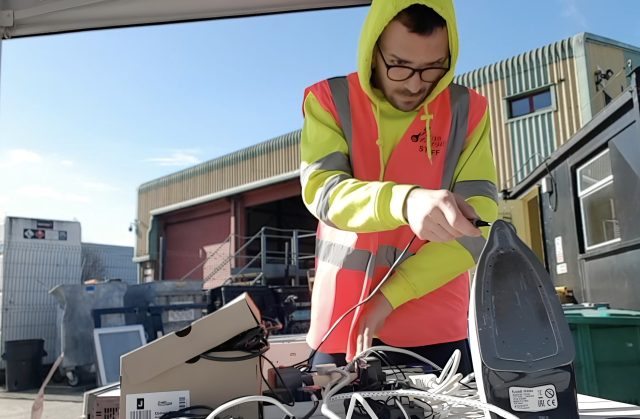
How can we scale up reuse and repair?
The responsibility for this lack of reuse sits firmly in the hands of national policy. Reuse and repair are widely acknowledged to be more efficient than recycling. But there are no binding requirements or incentives for manufacturers, the public sector or waste management industry, to prioritise reuse.
In fact, although recycling targets and the current Extended Producer Responsibility (EPR) requirements include reuse, they inadvertently put manufacturers and local authorities off investing in redistributing reusable items. With a far more established system, combined with the challenge of meeting targets, the emphasis has been on recycling. In the absence of specific reuse targets, there are few real incentives for local authorities to invest in redistributing usable products.
We’re calling for reuse targets: binding requirements to increase reuse in collaboration with local reuse and repair initiatives, separate from recycling targets. Only then will we see the resource, space and creative thinking needed to build an economy around reuse at scale.
Reuse targets and right to repair legislation for all products are two of the policies that we’re calling for in our Repair and Reuse Declaration. We’re delighted to see more than 350 businesses, institutions and repair cafes support it and a growing number of MPs and councils backing it too. Here’s to many more signing up in support this repair day.
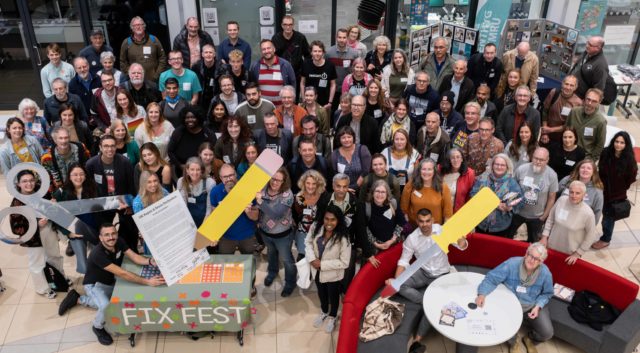
Photo: Mark A Phillips
1 Based on the number of repair groups registered with repaircafe.org, restarters.net, reparatur-initiativen.de and other data providers, accounting for overlaps and inactive groups. This is likely an underestimate of the number of repair groups globally.
2 Taking into account the average success rate of 53%
